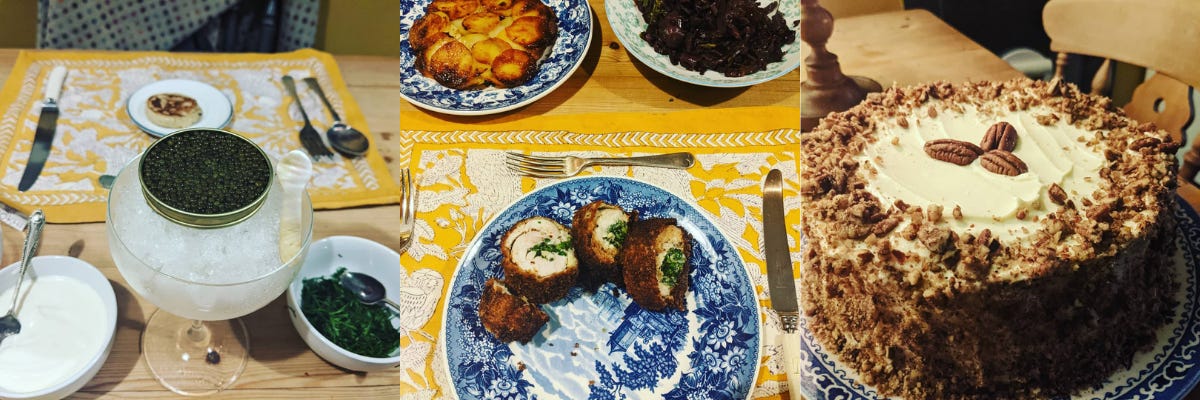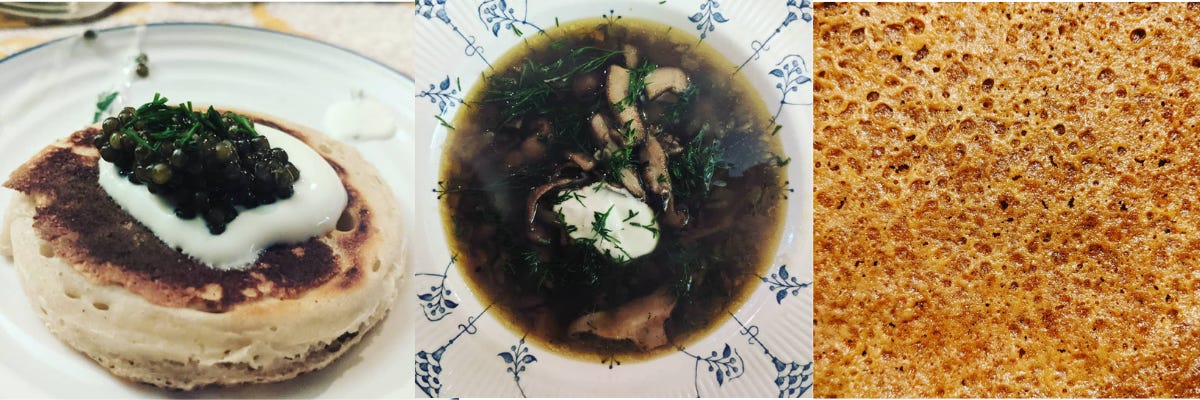The Menu
Caviar, with blinis and sour cream
Mushroom soup
Chicken Kiev, with Pommes Anna and braised red cabbage
Layered honey cake
The Music
Symphony 1-3 – Polovtsian Dances by Alexander Borodin
The Time
Tourists in early 19th century Russia were a rare sight – even the Grand Tour didn’t usually extend that far East, and on the odd occasions it did they complained about the enormous cost, extreme discomfort and the questionable food. The upper crust Russians on the other hand were rather a fan of all things European. French was the preferred language at court, and importing fancy French chefs to cook for your household became that century’s must have accessory.
One such importation was Marie Antoine Careme, perhaps the world’s first celebrity chef. Careme was a boy from the gutter done good. Abandoned aged ten by his parents in the midst of a particularly brutal bit of the French Revolution, he worked his way up the kitchen and patisserie hierarchy, crafting ludicrous centrepieces made of out sugar (think pyramids and ancient ruins). French chefs like Careme are central to the importance of our 19th century Russian sojourn – without them we wouldn’t have the Chicken Kiev, and the way that Europe eats meals, even now, would be entirely different.
There is a rather annoying pretentious tradition in Europe of naming dishes in French even when they are not, in some misguided attempt at sophistication. The British were awful at it in the 20th century, but the Russians were way ahead of this game and had started in 18th century. One of the ancestors of the Chicken Kiev, the Côtelette de volaille suffered this very fate of Frenchifying – in reality the authentically Russian dish was a chicken cutlet stuffed with a minced chicken and cream. The heavy application of butter popularised by French chefs such as Careme and Escoffier, who were employed in Russia from time to time, transformed the weighty Côtelette de volaille into the Chicken Kiev of frozen ready meal fame.
Careme’s other contribution to our meal was that he popularised the way meals were choreographed. Traditionally in Europe all the dishes were served together – service a la francais – a buffet by any other name. But as anyone who has eaten from a buffet knows, this means that the food has inevitably been sitting around for too long, gotten cold and it’s impossible to try everything. Careme popularised service a la russe – courses being served sequentially, creating a system where the food was much better but required about three times the number of staff – perfect for the super-rich.
The Cooking
It turns out cooking Chicken Kiev is quite hard. It requires judicious application of brute force, some very careful rolling and a few rounds of chilling and freezing. We ended up with a 50% success rate of butter not leaking out – which is the crucial goal. Possibly one needs less herbed butter or bigger breasts to make it easier.
The honey cake is a classic Russian affair, with as many layers as you can. Apparently first made for Empress Elizabeth (1779 – 1826), who had told the chef she hated honey. They really wanted to make it absolutely clear how wrong she was, and so the honey cake was born. It is clear from the eating of it why this cake changed Empress Elizabeth’s mind – surprisingly not too sweet (off set by the sour cream icing), and with an almost honey-comb like texture, it’s an eloquent argument for honey.
The Eating
We’ve become a bit fixated with making blinis/pikelets over the last few months and conveniently my brother had given us some Imperial grade caviar for Christmas, which made a change from the usual exchange of weighty tombs. We were a bit trepidatious, having never eaten caviar before, but it was much more delicate than we had anticipated.
Perhaps unsurprisingly for the beginning of the modern haute cuisine era, this was a pretty heavy meal involving around half a kilo of butter. Caviar is extremely filling, as is fried chicken filled with butter, pomme annes (more butter) and a several-layered honey cake with sour cream icing isn’t exactly light. It was, however, delicious, and went very well with a healthy amount of vodka.
The Clean up
There is apparently a Russian Mrs. Beaton alternative – A Guide to Young Housewives by Elena Molokhovets which I would have loved to use but sadly was only available in Russian.
The mushroom soup and honey cake recipes are from Mamushka by Olia Hercules with some input from elsewhere, and the Chicken Kiev recipe derived from Felicity Cloake’s ‘The Perfect’ column in The Guardian.
For an excellent essay on the naming of dishes, check out the Proceedings of the Oxford Symposium on Food and Drink 2015.
Concerning the butter intake – fortunately science has now told us that saturated fat does not cause cholesterol or indeed cause you to put on weight, despite out-of-date health advice from most governments. Having said that, probably best not repeated on a daily basis.





